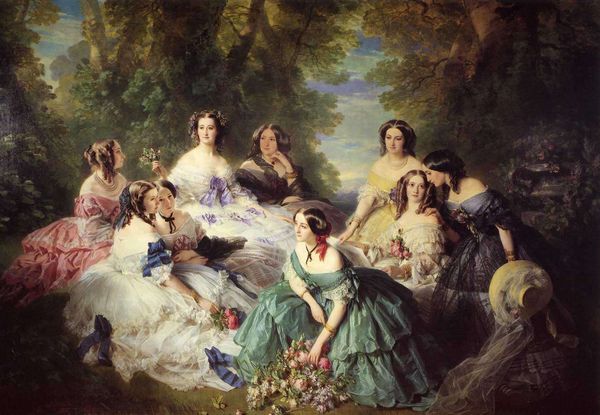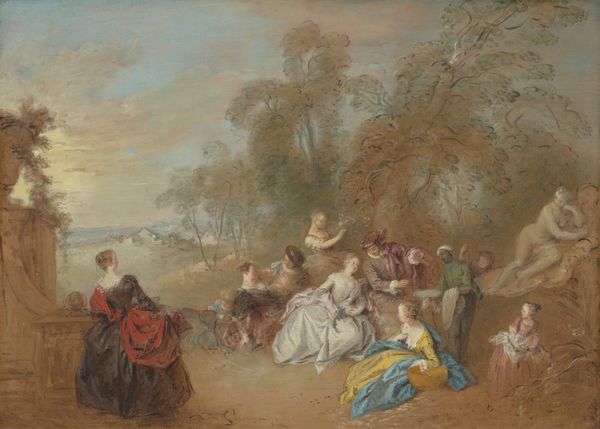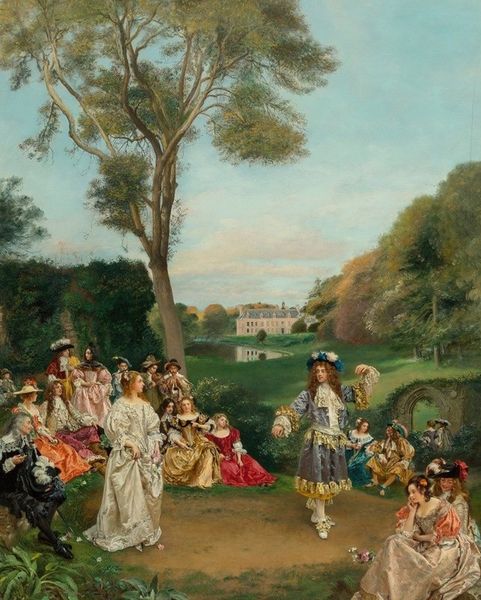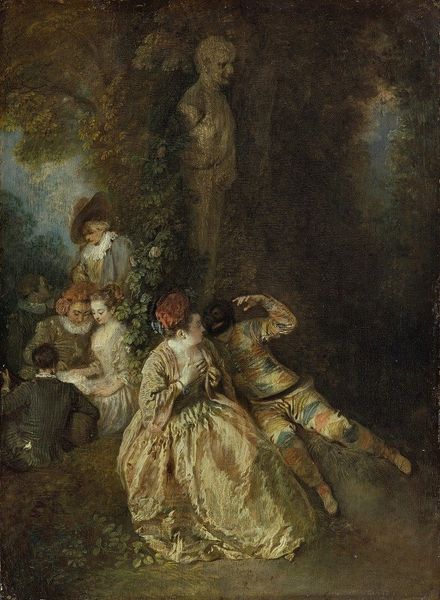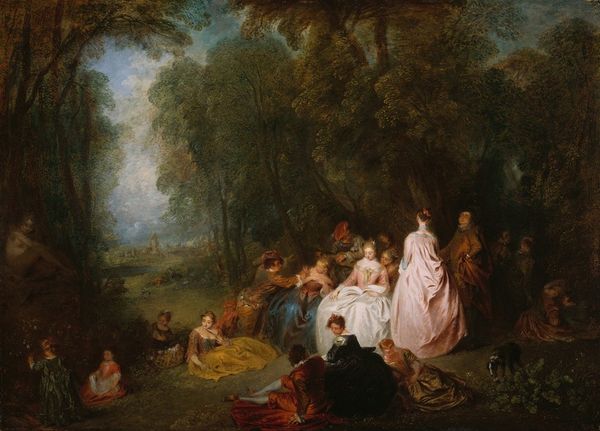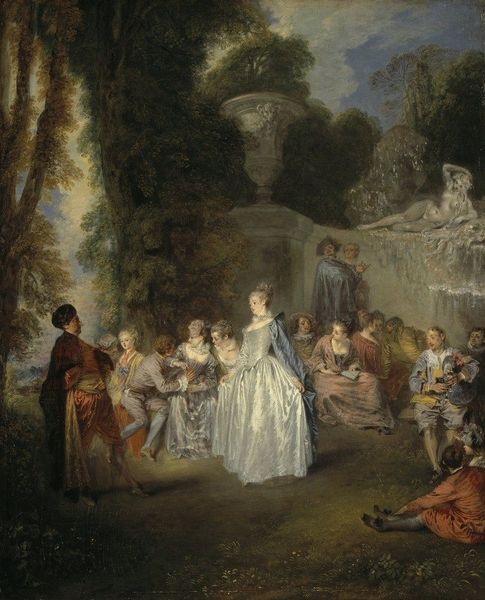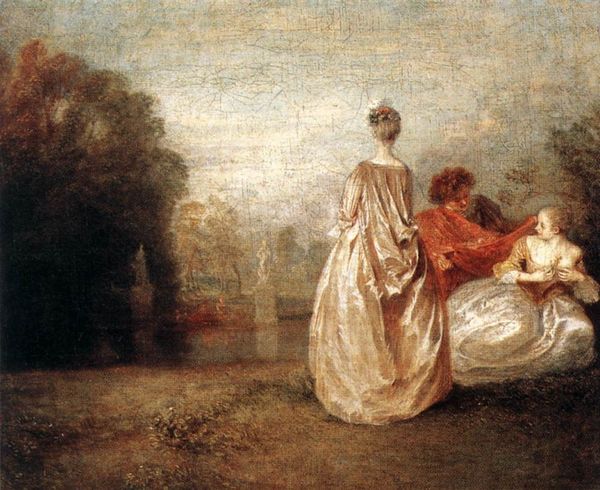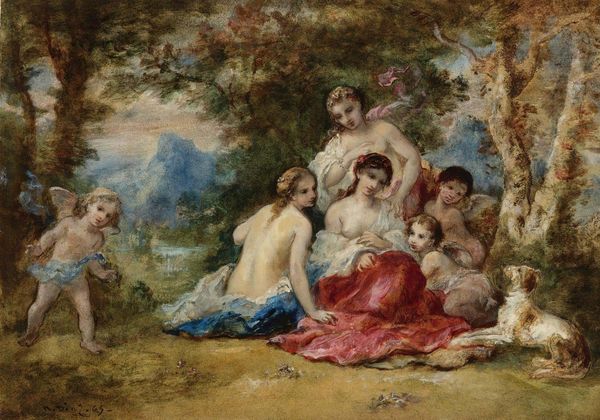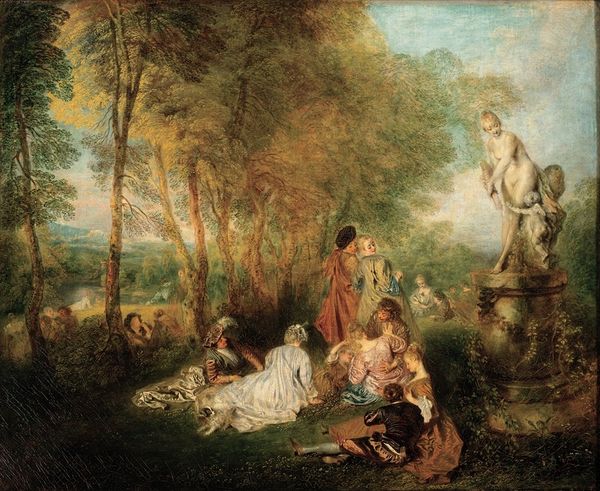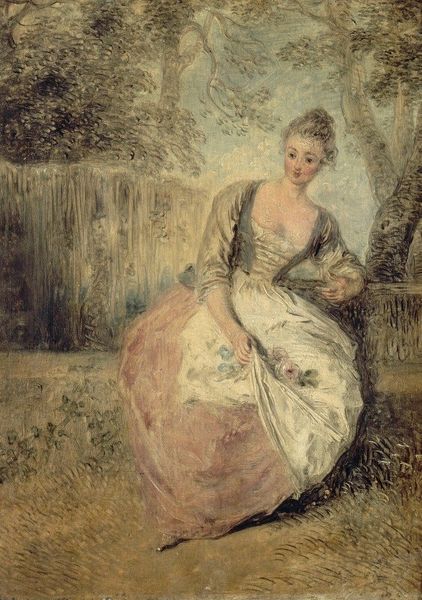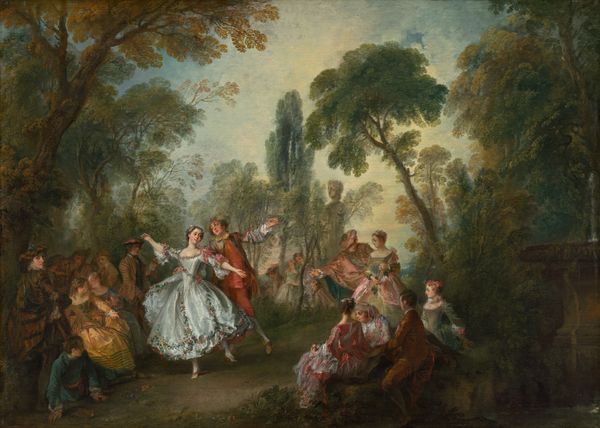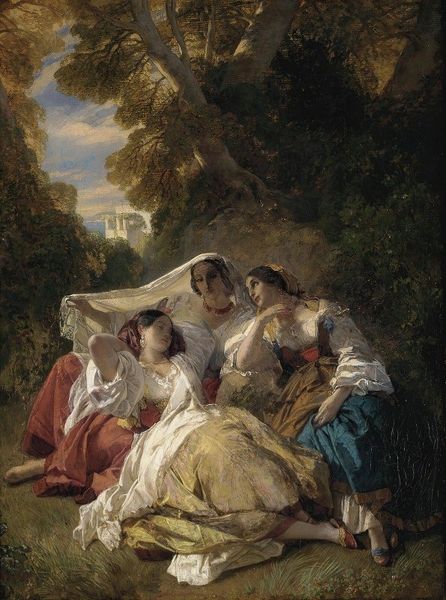
The Empress Eugenie Surrounded by her Ladies in Waiting 1855
0:00
0:00
franzxaverwinterhalter
Private Collection
Copyright: Public domain
Curator: Looking at this work, the first thing that strikes me is the almost oppressive amount of fabric. All those voluminous skirts! Editor: Indeed. What we have here is Franz Xaver Winterhalter’s “The Empress Eugenie Surrounded by her Ladies in Waiting," painted in 1855. It is a genre and portrait painting in oil paint. Curator: Oil makes sense given how sumptuously Winterhalter renders the folds of the gowns. Notice how the light catches the silk, creating a cascade of shadows and highlights. But the materiality speaks volumes here, doesn’t it? Each garment represents hours upon hours of labor. Think of all the dressmakers involved. Editor: Absolutely. And then consider the social signaling inherent in that kind of display. It's more than just portraiture; it is iconography about imperial power, the sun at the centre, her rays extended in female figures of a like social class, reflecting their own material well-being. Eugenie herself becomes an icon of fashion and empire. She even resembles depictions of Mary. Curator: That association with the Virgin Mary, the ideal of feminine virtue and grace, is no accident. She’s positioned almost centrally in this visual composition. She radiates. Even the softer colour palette that the artist employed helps build the sensation that surrounds her. But even beyond that, it reflects the political realities, the perceived virtues required of a Empress. Editor: The symbolism is carefully constructed, of course. This is Romanticism filtered through the lens of court portraiture. What the figures possess materially is carefully managed for consumption as image. The brushstrokes almost disappear. We rarely see the evidence of the physical construction of this painting, do we? Curator: And in its symbolism, it is meant to transcend just the portrait, it serves the narrative of that Court, and indeed of all Courts across time and geography. It allows an aspirational element in this composition to serve many symbolic ends. Editor: It truly captures its place and time with nuance. I am left admiring the hand skills but wary of what the materials came to symbolize. Curator: And for me, I will be considering the power that radiates outwards in the composition and the soft narrative created from that nucleus.
Comments
No comments
Be the first to comment and join the conversation on the ultimate creative platform.
